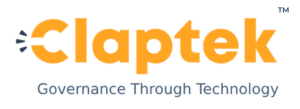Company Profile
Bank of Baroda is an Indian nationalized banking and monetary administration organization established in Vadodara. It is the third biggest nationalized bank in India, with 132 million clients, a complete business of US$218 billion and a worldwide presence of 100 overseas workplaces. Bank of Baroda offers different types of accounts to meet your monetary objectives and secure your future. In 2019, Govt of India approved the merger of Bank of Baroda with Vijaya Bank and Dena Bank making Bank of Baroda India’s third largest lender in the Public Sector.
With the merger, the scope of the Audit implementation expanded to 8500+ Branches and 24 types of Audits. Claptek was functional in accommodating the restructured environment of the Bank and successfully rolled out Credit Audit and RBIA Audit in the month of September 2019 and January 2020 respectively.
Bank of Baroda Audit Implementation is the largest MetricStream implementation with 2500+ Auditors and 20000+ Business Users in India.

Business Challenges
- Lack of collaboration on processes such as fieldwork, reporting, and follow-ups and inability to leverage information
- Manual and siloed processes lead to inefficiencies and duplication of work
- Lack of system-supported follow-ups
- Low data accuracy
- Inability to communicate and leverage information
- Need for streamlined Audit execution
- Fragmented Issue Management Process
- Need for centralized scheduling
Claptek’s Solution
In the heavily regulated banking industry, The Reserve Bank of India is increasing its thrust on regulatory compliance and encompassing all financial Institutions including UCBs and NBFC. The RBI has announced suitable guidelines to large UCBs and NBFCs on the adoption of Risk-Based Internal Audit (RBIA) with a view to transform and strengthen the Internal Audit Function, which works as a third line of defence (3rd LOD) in the ‘Statement on Developmental and Regulatory Policies’. Risk-based internal auditing (RBIA) is a methodology that links internal auditing to an organisation’s overall risk management framework. RBIA allows internal audit to provide assurance to the board that risk management processes are managing risks effectively, in relation to the risk appetite.
- It covers the entire life cycle of the Audit function, thus eliminating manual tracking processes and allowing the audit to focus on core functionality
- Risk-based audit methodology
- Audit planning by scheduling audit activities and assigning audit resources within the system
- Repository of Audit checklists based on compliance requirements and audit objective context that facilitates field audit management processes including storing working papers, records and evidence
- Tracking observations with all possible classifications and converting the same to reportable issues
- Establishing accountability for the issues identified
- Generating audit reports, trackers, drill down dashboards accessible to all the stakeholders on a need-to-know basis with aging and other analysis for efficient tracking and meaningful insights
- Creating a historical repository of all Issues, thus facilitating tracking the direction of risks, easy search functionality based on a wide range of parameters, tagging and search functionality
- Integrating the audit life cycle with a local Active Directory of Document Management System or any other proprietary system as per the need
- The software allows concurrent sessions for multi-user environments, configurable workflows and is available on-premises or on the cloud as per the requirement.
- It facilitates field audit management processes including storing working papers, records and evidence.
- Integrating with various other applications in Bank to draw details of staffs, various product segments into Audit System
Major Benefits
The internal audit function is an integral part of sound corporate governance and is considered the third line of defence. Considering the aggressive timelines and the need to establish a comprehensive function, it is imperative that these institutions will require a proven software platform that supports all associated functions.
- It helps to improve consistency through a common audit framework & audit universe
- It improves productivity and efficiency, including audit planning, risk assessments, fieldwork, work paper management, and audit reporting, as well as recommendations management and follow-ups.
- It helps to improve visibility into key risk areas
- It helps to follow a faster report process to the board and regulators
- It helps to automate the identification, tracking and reporting of issues to closure
- It helps to improve visibility into organization roles and responsibilities








